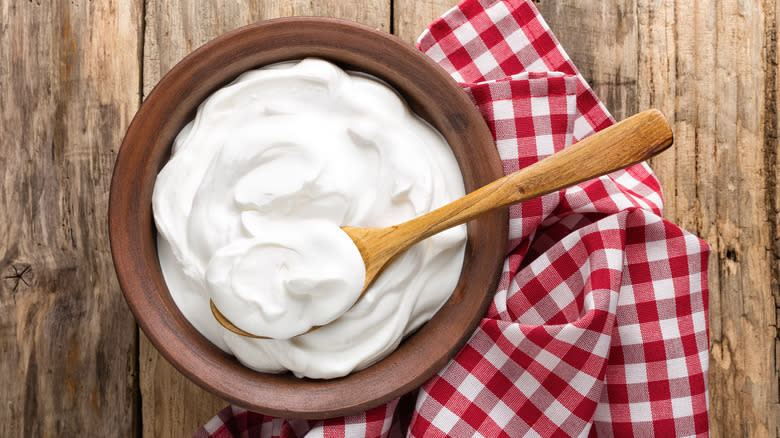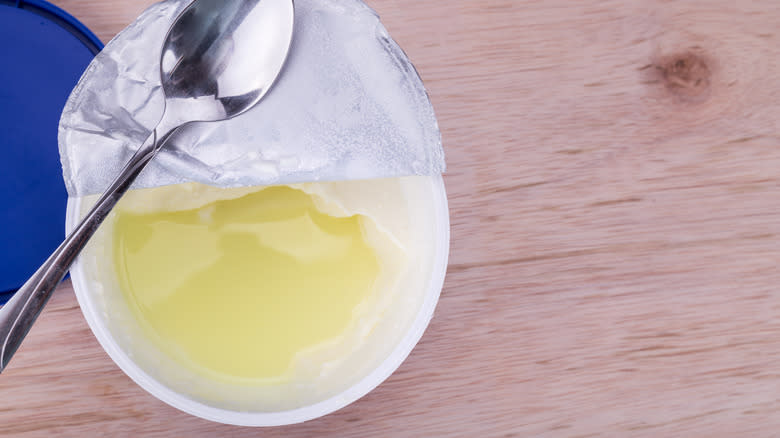The Sealing Trick To Store Sour Cream After Opening

Sour cream is a versatile, staple ingredient that everyone should store in their kitchen. It has a thick and creamy texture and a rich, tangy flavor that goes well with everything from main dishes like this loaded beef enchilada to desserts like this classic pound cake. Like many of our favorite dairy-based ingredients, however, it can be prone to going bad in a short matter of weeks or sooner if you're unlucky. Thankfully, there is one clever tip that can help prevent your fears of untimely spoilage from coming to fruition, and all it takes is a little plastic wrap.
One of the main factors that accelerate the expiration of sour cream is exposure to air. While storing open sour cream in an airtight container in the refrigerator helps to reduce this exposure, there is still a small amount of air inside the container that will come into contact with the surface of the sour cream. Plastic wrap eliminates this problem by creating a barrier between the sour cream and the air. Simply place a square of plastic wrap over the opening of the container and press down until it makes full contact with the top of the cream. This technique can stretch the lifespan of your sour cream to over a month.
Read more: 15 Popular Pasta Sauce Brands Ranked
How To Keep Your Sour Cream Even Fresher

If plastic wrap doesn't feel like it is doing enough on its own, we have previously covered another tip to make your sour cream last longer. All you need to do is store the container upside down, with the lid resting on the refrigerator shelf. The weight of the contents will push any air out and create a vacuum in the space left over, slowing the rate at which the cream expires. While it may seem like a logical step to further preserve the condiment, we recommend that you keep your sour cream out of the freezer, as this tends to alter its texture and make it grainy.
Even with these freshness tips in mind, it is still important to keep an eye out for signs of spoilage to prevent yourself from accidentally consuming harmful pathogens that can make you sick. Examine the container and its contents for signs of mold growth, a funky, unpleasant odor, or excessive wateriness on the surface, as these are all evidence that the sour cream has gone bad or will do so soon. In these cases, it is best to throw it out rather than eat it.
Read the original article on Tasting Table

